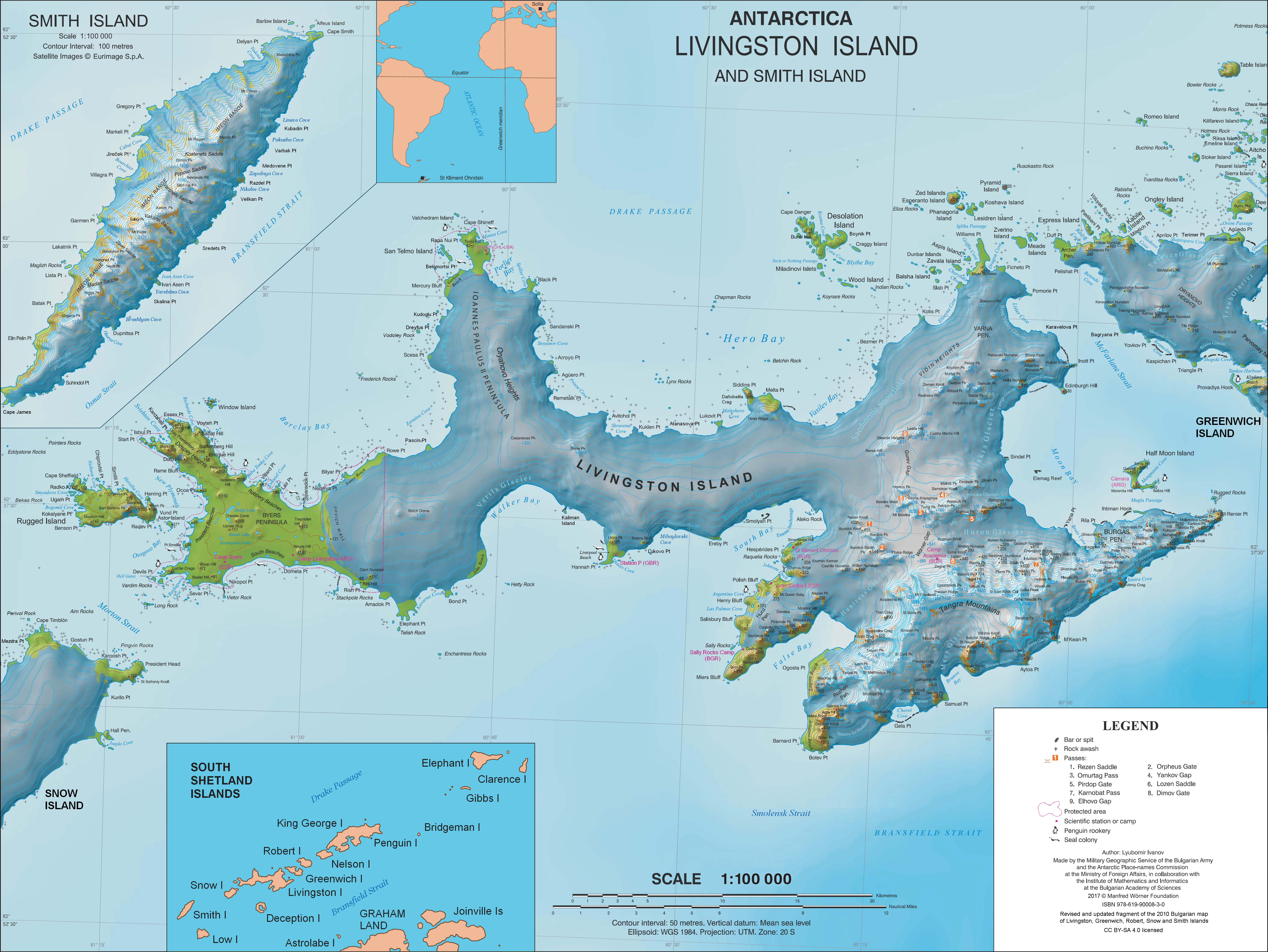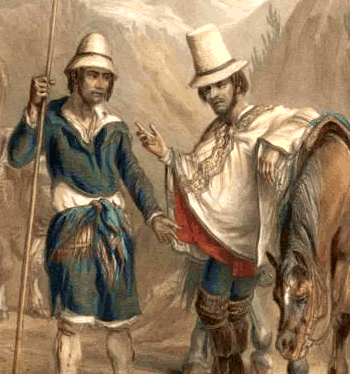|
Mount Friesland
Mount Friesland is a mountain rising to in the homonymous Friesland Ridge, the summit of Tangra Mountains and Livingston Island in the South Shetland Islands, Antarctica. Its north rib is connected to Pliska Ridge by Nesebar Gap on the west, and to Bowles Ridge by Wörner Gap on the north. On the east Mount Friesland is connected to Presian Ridge and further on to Catalunyan Saddle and Lyaskovets Peak. On the south-southwest it is connected by a short saddle to ‘The Synagogue’ a sharp-peaked rock-cored ice formation abutting neighbouring St. Boris Peak. The peak is heavily glaciated and crevassed, surmounting Huntress Glacier to the west, Perunika Glacier to the north-northwest, Huron Glacier to the northeast and Macy Glacier to the southeast. The local weather is notoriously unpleasant and challenging; according to the seasoned Antarctic mountaineer Damien Gildea who climbed in the area, 'just about the worst weather in the world'. History The feature was known to Am ... [...More Info...] [...Related Items...] OR: [Wikipedia] [Google] [Baidu] |
Lyaskovets Peak
Lyaskovets Peak ( bg, връх Лясковец, vrah Lyaskovets, ) is the easternmost peak of Friesland Ridge in the Tangra Mountains, eastern Livingston Island and has an elevation of 1,473 m. The peak is bounded by Catalunyan Saddle on the west and Shipka Saddle on the east, and is heavily glaciated and crevassed, with precipitous western, southern and eastern slopes. It surmounts Huron Glacier to the northwest and northeast, and Macy Glacier and Brunow Bay area to the south. Its northern offshoot forms Zograf Peak, and is linked to Lozen Nunatak, Erma Knoll and Aheloy Nunatak in Huron Glacier. The peak is named after Lyaskovets, a town in central northern Bulgaria. Location Lyaskovets Peak is located at , which is 2.3 km east-northeast of Mount Friesland (the summit of Friesland Ridge and Livingston Island, 1,700 m), 3.2 km south-southeast of Kuzman Knoll, 1.33 km south by east of Zograf Peak, 1.3 km west of Levski Peak, and 4.6 km west by north of ... [...More Info...] [...Related Items...] OR: [Wikipedia] [Google] [Baidu] |
Macy Glacier
Macy Glacier is a long and crescent-shaped glacier on the southern slopes of the Tangra Mountains, Livingston Island in the South Shetland Islands, Antarctica. The glacier is bounded by Friesland Ridge to the northwest, Levski Ridge to the northeast and Peshev Ridge to the southeast, and flows southwestwards into the head of Brunow Bay. The feature was named by the UK Antarctic Place-names Committee in 1958 for Robert Macy, Master of the brig ''Aurora'', one of the fleet of American sealers from New York which visited the South Shetland Islands in 1820–21. Location The glacier's midpoint is located at (British mapping in 1968, and Bulgarian in 2005 and 2009). See also * List of glaciers in the Antarctic * Glaciology Glaciology (; ) is the scientific study of glaciers, or more generally ice and natural phenomena that involve ice. Glaciology is an interdisciplinary Earth science that integrates geophysics, geology, physical geography, geomorphology, c ... ... [...More Info...] [...Related Items...] OR: [Wikipedia] [Google] [Baidu] |
Chilean People
Chileans ( es, Chilenos) are people identified with the country of Chile, whose connection may be residential, legal, historical, ethnic, or cultural. For most Chileans, several or all of these connections exist and are collectively the source of their Chilean identity. Chile is a multilingual and multicultural society, but an overwhelming majority of Chileans have Spanish as their first language and either are Christians or have a Christian cultural background. Therefore, many Chileans do not equate their nationality with ethnicity, but with citizenship and allegiance to Chile. The overwhelming majority of Chileans are the product of varying degrees of admixture between European ethnic groups (predominantly Spaniards and Basques) with peoples indigenous to Chile's modern territory (predominantly Mapuche). Although the historic mestizaje of Europeans and Amerindians is evident across all social strata in the Chilean population, there is a strong correlation between the rati ... [...More Info...] [...Related Items...] OR: [Wikipedia] [Google] [Baidu] |
John Bath (mountaineer)
John Bath is a former professional rugby league footballer who played in the 1960s. He played at club level for Hull Kingston Rovers, and Wakefield Trinity, as a . Playing career Championship final appearances John Bath played left- in Wakefield Trinity’s 21-9 victory over St. Helens in the Championship Final replay during the 1966–67 season at Station Road, Swinton on Wednesday 10 May 1967.Hoole, Les (2004). ''Wakefield Trinity RLFC - FIFTY GREAT GAMES''. Breedon Books. Club career John Bath made his début for Wakefield Trinity Wakefield Trinity is a professional rugby league club in Wakefield, West Yorkshire, England, that plays in the Super League. One of the original twenty-two clubs that formed the Northern Rugby Football Union in 1895, between 1999 and 2016 the ... during March 1966, and he played his last match for Wakefield Trinity during the 1967–68 season. References External linksSearch for "Bath" at rugbyleagueproject.org {{DEFAULTSORT:Bath, ... [...More Info...] [...Related Items...] OR: [Wikipedia] [Google] [Baidu] |
Enrique Hill
Enrique Hill ( bg, хълм Енрике, ‘Halm Enrique’ \'h&lm en-'ri-ke\) is the ice-free hill rising to 156 m in Dospey Heights on the Ray Promontory of Byers Peninsula, Livingston Island in the South Shetland Islands, Antarctica. It surmounts Barclay Bay to the east and northeast, and Diomedes Lake on the southeast The feature is part of the Antarctic Specially Protected Area ''ASPA 126 Byers Peninsula'', situated in one of its restricted zones. Measure 4 (2016), ATCM XXXIX Final Report. Santiago, 2016 The hill is named after the Jordi Enrique from |
Sàbat Hill
Sàbat Hill ( bg, хълм Сабат, ‘Halm Sàbat’ \'h&lm 'sa-bat\) is the ice-free hill rising to 151 m in Dospey Heights on the Ray Promontory of Byers Peninsula, Livingston Island in the South Shetland Islands, Antarctica. Surmounting Richards Cove to the west-northwest and Barclay Bay to the east. The feature is part of the Antarctic Specially Protected Area ''ASPA 126 Byers Peninsula'', situated in one of its restricted zones. Measure 4 (2016), ATCM XXXIX Final Report. Santiago, 2016 The hill is named after Francesc Sàbat from who, toget ... [...More Info...] [...Related Items...] OR: [Wikipedia] [Google] [Baidu] |
Jorge Enrique
Jorge is a Spanish and Portuguese given name. It is derived from the Greek name Γεώργιος (''Georgios'') via Latin ''Georgius''; the former is derived from (''georgos''), meaning "farmer" or "earth-worker". The Latin form ''Georgius'' had been rarely given in Western Christendom since at least the 6th century. The popularity of the name however develops from around the 12th century, in Occitan in the form ''Jordi'', and it becomes popular at European courts after the publication of the ''Golden Legend'' in the 1260s. The West Iberian form ''Jorge'' is on record as the name of Jorge de Lencastre, Duke of Coimbra (1481–1550). List of people with the given name Jorge * Jorge (footballer, born 1946), Brazilian footballer * Jorge (Brazilian singer), Brazilian musician and singer, Jorge & Mateus * Jorge (Romanian singer), real name George Papagheorghe, Romanian singer, actor, TV host * Jorge Betancourt, Cuban diver * Jorge Campos, Mexican football player * Jorge Cantú, b ... [...More Info...] [...Related Items...] OR: [Wikipedia] [Google] [Baidu] |
Francesc Sàbat
Francesc () is a masculine given name of Catalan origin. It is a cognate of Francis, Francesco, Francisco, François, and Franz. People with the name include: *Cesc Fàbregas (Francesc Fàbregas i Soler) (born 1987), Spanish professional football player * Francesc Antoni de la Dueña y Cisneros (1753–1821), Roman Catholic prelate; Bishop of Urgell 1797–1816 *Francesc Areny Casal (contemporary), Andorran politician *Francesc Arnau (1975–2021), Spanish professional football player * Francesc Bellmunt (born 1947), Spanish screenwriter and film director * Francesc Berenguer i Mestres (1866–1914), Spanish Art Nouveau architect *Francesc Cambó (1876–1947), Spanish politician, government minister, and artistic supporter *Francesc Candel Tortajada (a.k.a. Paco Candel) (1925–2007), Spanish writer and journalist * Francesc Capdevila (born 1956), Spanish artist and illustrator *Francesc de Tamarit (1600–1653), Spanish politician and military leader during the Catalan Revolt *Fr ... [...More Info...] [...Related Items...] OR: [Wikipedia] [Google] [Baidu] |
Catalan People
Catalans (Catalan, French and Occitan: ''catalans''; es, catalanes, Italian: ''catalani'', sc, cadelanos) are a Romance ethnic group native to Catalonia, who speak Catalan. The current official category of "Catalans" is that of the citizens of Catalonia, an autonomous community in Spain and the inhabitants of the Roussillon historical region in southern France, today the Pyrénées Orientales department, also called Northern Catalonia and '' Pays Catalan'' in French. Some authors also extend the word "Catalans" to include all people from areas in which Catalan is spoken, namely those from Andorra, Valencia, the Balearic islands, eastern Aragon, Roussillon, and the city of Alghero in Sardinia. The Catalan government regularly surveys its population regarding its "sentiment of belonging". As of July 2019, the results point out that 46.7% of the Catalans and other people living in Catalonia would like independence from Spain, 1.3% less than the year before. Histo ... [...More Info...] [...Related Items...] OR: [Wikipedia] [Google] [Baidu] |
Juan Carlos I Base
Juan Carlos I Antarctic Base, named after the former king of Spain, Juan Carlos I ( es, Base Antártica Española Juan Carlos Primero), is a seasonal (November to March) scientific station operated by Spain, opened in January 1988. Situated on Hurd Peninsula, Livingston Island in the South Shetland Islands, Antarctica. The base is controlled by the Marine Technology Unit of the Spanish National Research Council and is 20 miles away from the Spanish Antarctic base Gabriel de Castilla. The base has undergone several renovations, the closest remodeling was completed in 2018 and it was inaugurated by the Science Minister, Pedro Duque, on February 2, 2019. This latest renovation involved the construction of "new facilities hathave allowed it to double its capacity, up to 51 people, and increase the space available for scientific and technical personnel in laboratories." Location The base is located at which is on the coast of Española Cove, South Bay, in the northern foothills of ... [...More Info...] [...Related Items...] OR: [Wikipedia] [Google] [Baidu] |
False Bay, Livingston Island
False Bay () is a bay long, which lies between Barnard Point and Miers Bluff on the south side of Livingston Island, in the South Shetland Islands, Antarctica. The glaciers Hurd Ice Cap, Huntress, Ruen Icefall, Peshtera and Charity feed the bay. It was probably first entered and charted by Captain Nathaniel Palmer in November 1820, and was likely named because of the possibility in thick weather of confusion between this feature and nearby South Bay, where Johnsons Dock was frequented by the early sealers. Maps Chart of South Shetland including Coronation Island, &c.from the exploration of the sloop Dove in the years 1821 and 1822 by George Powell Commander of the same. Scale ca. 1:200000. London: Laurie, 1822 South Shetland Islands.Scale 1:200000 topographic map No. 5657. DOS 610 – W 62 60. Tolworth, UK, 1968. * Islas Livingston y Decepción. Mapa topográfico a escala 1:100000. Madrid: Servicio Geográfico del Ejército, 1991. * L.L. IvanovAntarctica: Livingston Islan ... [...More Info...] [...Related Items...] OR: [Wikipedia] [Google] [Baidu] |
Barnard Point
Barnard Point is a headland which marks the south-east side of the entrance to False Bay on the south side of Livingston Island in the South Shetland Islands, Antarctica. It is situated on Rozhen Peninsula, north-north-west of Botev Point and south-east of Miers Bluff (British mapping in 1968, and Bulgarian in 2005 and 2009). History The point was known to sealers as early as 1822. The name was applied about a century later, probably after Mount Barnard (now Mount Friesland) which surmounts it to the north-east. Charles H. Barnard, captain of the ship ''Charity'' of New York, was a sealer in the South Shetlands in 1820–21.Stackpole, E. 1955The American Sealers and the Discovery of the Continent of Antarctica: The voyage of the Huron and the Huntress. Mystic, Connecticut. 86 pp. Important Bird Area The site has been identified as an Important Bird Area (IBA) by BirdLife International BirdLife International is a global partnership of non-governmental organiza ... [...More Info...] [...Related Items...] OR: [Wikipedia] [Google] [Baidu] |






